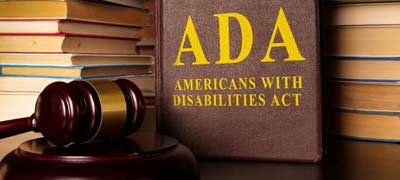The Americans with Disabilities Act (ADA) applies to commercial spaces and public accommodations alike. This landmark law also applies to rented living spaces. Those with disabilities cannot be discriminated against when they are seeking housing. Therefore, some properties do need to be modified in order to make ADA compliance possible.
It’s important for landlords to understand what they need to have in order to minimize their risk of liability stemming from non-compliance.
Reasonable modifications need to be made
The ADA mandates reasonable modifications. This is not necessarily a strict definition. Factors to consider include the expense of the project and how fast it can be carried out. An example of a reasonable modification under the ADA may involve installing ramps to ensure that anyone in a wheelchair has access to a specific unit. A landlord may not be obligated to install an elevator or some other type of lift, even if that would be easier to use. But they would need to install a ramp so that the individual could get to their unit.
Common areas
Some buildings have multiple units in addition to common areas. It’s very important that these common areas are ADA compliant. Compliance could involve making modifications to a parking lot or the sidewalk as well. Tenants are not responsible for these areas, but landlords must make sure that accessibility is possible.
Potential types of disabilities
When making reasonable accommodations, landlords need to consider potential disabilities that could impact how someone uses the space. Common disabilities include: mobility impairment, intellectual disabilities, hearing impairments, epilepsy, speech impairments and conditions that render individuals unable to move in a stable fashion. Some of the most common examples of alterations that landlords must undertake include the aforementioned accessibility ramps, railings, wider hallways so that wheelchairs can fit and cabinets and counter spaces that are accessible to someone who cannot stand on their own.
Both landlords and tenants generally benefit from understanding their legal rights, their legal responsibilities and their legal options concerning this area of law, given its complexities and its consequential nature.

